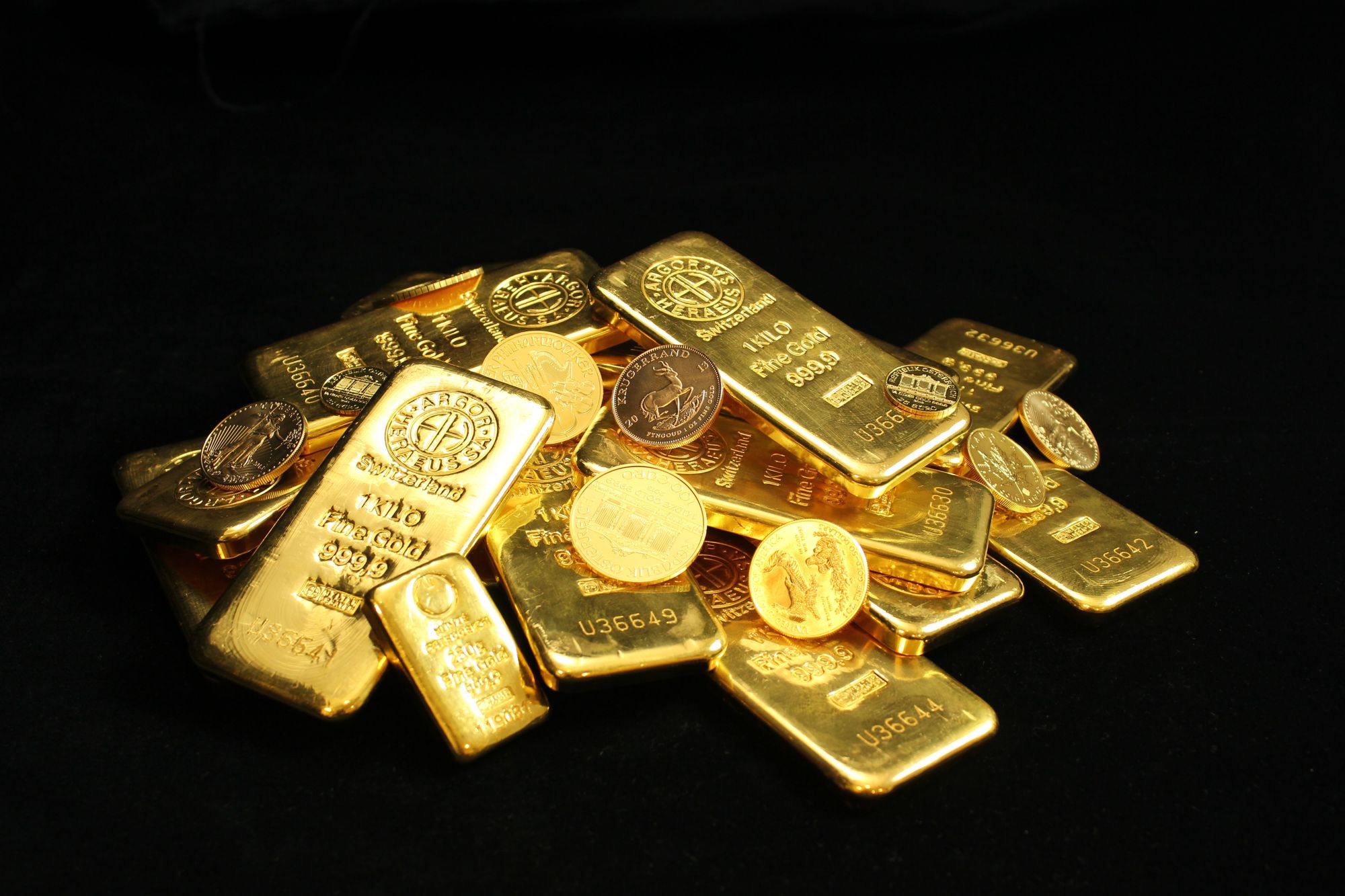The GST was enacted on July 1, 2017, that impacted the prices of a variety of goods. Among those goods includes gold as well. Besides, the adoption of GST had a major impact on gold market pricing.

Nevertheless, when it comes to gold, separate GST rates were applied at different phases. It includes phases when gold was manufactured, when it was supplied, and so on. This is why it is critical to comprehend the eventual impact of GST on gold and gold jewelry prices.
Let’s understand the concept of GST on gold and gold jewelry thoroughly. We’ll cover:
- What is GST on Gold?
- Impact of GST on Gold?
- How to Calculate GST on Gold?
- Example of GST on Gold?
- Different Rates Applicable on Gold
- GST Rates on Gold Jewelry
- Exemption on GST
- GST on Gold/ GST on Gold Jewelry/ GST on Gold Coins
- Revised Rate on Gold Jewelry
- e-Way Bill Rule
- Input Tax Credits Availability
- Key Takeaways
What is GST on Gold?
Gold demand is increasing as the economy slowly recovers. However, there are various taxes that must be considered while investing in gold and gold commodities.
Every time someone buys gold jewelry, they must pay a set amount of 3 percent GST. In addition, he must pay GST at a rate of 5% on the making charges. It's worth noting that the GST rates for gold import, purchase, and manufacturing are all different.
When you sell old gold jewelry and buy new jewelry in one transaction, however, you don't have to pay GST. This simply means that if you are exchanging old gold items for new gold, then you are saving on GST tax.
Impact of GST on Gold?
Previously, customers had to pay 1% service tax in addition to 1% VAT. As a result, customers had to pay a total of 2% extra and above the selling cost of purchased jewelry.
However, with the implementation of GST, all other taxes were discarded. And, the gold tax rate of 3% came into effect. However, GST turned out to be more expensive for customers.
How to Calculate GST on Gold?
In India, there is no standard invoice for GST on gold.
Moreover, jewelers utilize different billing systems. The Jewellery Association, on the other hand, announces the daily gold rate every morning.
When calculating the final jewelry price, that rate is used.
Example of GST on Gold?
Suppose you purchase 25-gram of gold jewelry, you will have to pay accordingly. Check this table below that compares pre-GST and Post-GST:
Different Rates Applicable on Gold
The current pricing for purchasing new gold jewelry is as follows:
- Customs duty of 10% on imported gold,
- A 3% GST on the price of gold used in jewelry,
- Making charges are subject to a 5% GST.
Because gold is an imported commodity, it is also subject to Customs Duty.
Furthermore, the updated GST on gold tax slabs, which was announced on June 3rd, 2017, is set at a rate of 3%. This means that all finished and unfinished gold products will be subject to a 3% tax, which will be paid by the end-user. Moreover, the cost of producing gold jewelry is subject to a 5% fee.
Nevertheless, the GST on gold production charges was eventually reviewed and dropped to 5% after petitions from jewelry institutes and government entities.
GST Rates on Gold Jewelry
Refer to this table below to understand GST Rates on Gold Jewelry in a better way:
Exemption on GST
A GST exemption was declared at the 31st GST Council meeting on 22 December 2018. Furthermore, this announcement on gold supplies was made by a notified individual to certified jewelry exporters.
However, the primary focus of this exemption is to minimize the GST burden on gold jewelry exporters. Also, to make India's gold export sector more competitive in the global market.
Making charges are taxed at a rate of 5%, although licensed jewelers can claim a 2 percent Input Tax Credit on these costs. On the other hand, the exemption is meant to help gold jewelry exporters rather than domestic customers.
GST was introduced so that it brings transparency and accountability to the gold sector. However, it worked contrary to this belief. Sellers instead started inclining towards the unorganized gold market and illegally importing raw gold.
GST on Gold/ GST on Gold Jewelry/ GST on Gold Coins
Under Section 7 of the CGST Act, the supply of gold is deemed a supply of goods. Also, note that according to the GST statute, gold bars are considered ‘goods.’
According to Section 8 of the CGST Act, selling gold ornaments or jewelry to the general public constitutes a composite supply of goods and services. Furthermore, making changes or adding value to the gold utilized is done in the context of job work.
Because the primary supply is the sale of gold, the GST rate of 3% instead of 5% will be applied to the total value of the jewelry, whether or not making costs are listed separately.
The GST registration threshold limits that apply to ordinary taxpayers also work the same to gold mining and distribution enterprises. Additionally, enterprises selling gold can use the composition system under section 10 of the CGST Act.
Many gold merchants, sellers, and jewelers hire goldsmiths and specialists to work on the gold bars or gold biscuits they provide in order to create jewelry.
Moreover, it is regarded as a service supplier.
Making charges are what goldsmiths will charge for their services, and they will be subject to a 5% GST. However, if these goldsmiths or specialists are not GST registered, then the gold merchant or jeweler must pay GST on a reverse charge basis at the rate of 5%.
Consumers have to pay an additional 5% GST if they approach those jewelers. Also, those jewelers should be GST registered.
Moreover, when unregistered persons sell gold jewelry or exchange gold ornaments for new ones at jewelry stores. Then, no GST is applied. It is not regarded as a means of advancing a business and is therefore beyond the scope of GST supply.
However, if a dealer or a gold company buys and sells used gold jewelry, GST is charged on the value of the gold. It works as computed under rule 32(5) of the CGST Rules if the prerequisites are met.
Repairs to jewelry will be considered making charges, and GST will be applied separately at a rate of 5%.
Revised Rate on Gold Jewelry
The implementation of GST has resulted in a number of developments in the jewelry industry.
Furthermore, the making charges of gold jewelry are subject to a 5% GST. This is in addition to the fact that gold jewelry-making charges vary per jeweler. Moreover, it is bound to affect the final GST on making charges - the higher the making charges, the higher the GST.
For example, if you go to a jeweler that is known for its expertise in artistry. Then, the design costs will be higher because the job is intricate. On the other hand, making and creating costs would be lower for stock jewelry models.
Due to the volatility of the gold market, it is critical that your gold purchase be safe and secure. Therefore, make sure to receive a receipt after your purchase. Moreover, it is critical to buy gold offline that guarantees legitimacy. Buying offline gold helps to avoid getting scammed or obtaining fake or smuggled gold products.
Nevertheless, online gold has been increasingly popular in recent years. Online gold has a high level of liquidity. It simply means that you may buy and sell gold at any time, from anywhere.
The most interesting part of buying and selling gold online is that the prices are the same all throughout India. It further means you can purchase and sell gold at market prices.
In addition, you also have the option of redeeming the gold you've bought. Moreover, once you pay for the production fees, you will obtain the gold you want to redeem.
e-Way Bill Rule
According to CGST Rule 138(14) transporting gold in any form, including jewelry, goldsmith's crafts, and items does not require an e-way bill. Consequently, gold can be transported without an e-way bill. It does not matter if the provider or recipient of gold is GST registered or not.
Input Tax Credits Availability
The goldsmith or gold merchant can claim Input Tax Credit (ITC) for gold and other job work expenditures incurred on the raw materials used. Furthermore, the ITC can be claimed even if the gold merchant pays tax on a reverse charge basis for supplies from an unregistered job worker.
Key Takeaways
We have summarised the critical points for your reference from this comprehensive guide. Let’s learn:
- The gold tax rate of 3% came into effect.
- In India, there is no standard invoice for GST on gold.
- The GST registration threshold limits that apply to ordinary taxpayers also work the same to gold mining and distribution enterprises.
- Making charges are what goldsmiths will charge for their services, and they will be subject to a 5% GST.
- The primary supply is the sale of gold, the GST rate of 3% instead of 5% will be applied to the total value of the jewelry
- Make sure to receive a receipt after your purchase. Moreover, it is critical to buy gold offline that guarantees legitimacy.
- Buying and selling gold online is that the prices are the same all throughout India
- Transporting gold in any form, including jewelry, goldsmith's crafts, and items does not require an e-way bill
Related Articles
https://www.deskera.com/blog/income-tax/
https://www.deskera.com/blog/efile-income-tax-returns-india/
https://www.deskera.com/blog/what-is-gstinhat-is-gstin/








